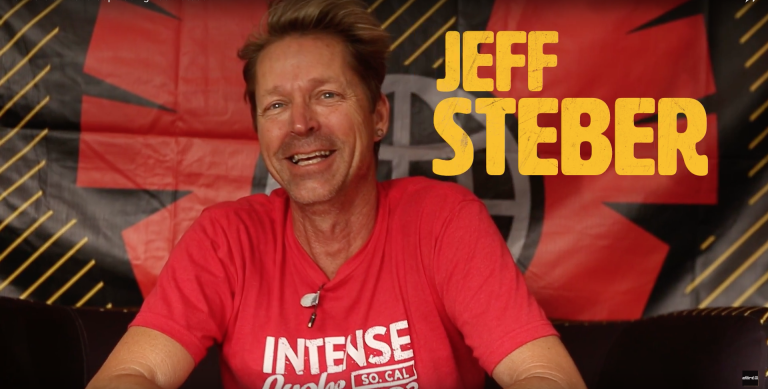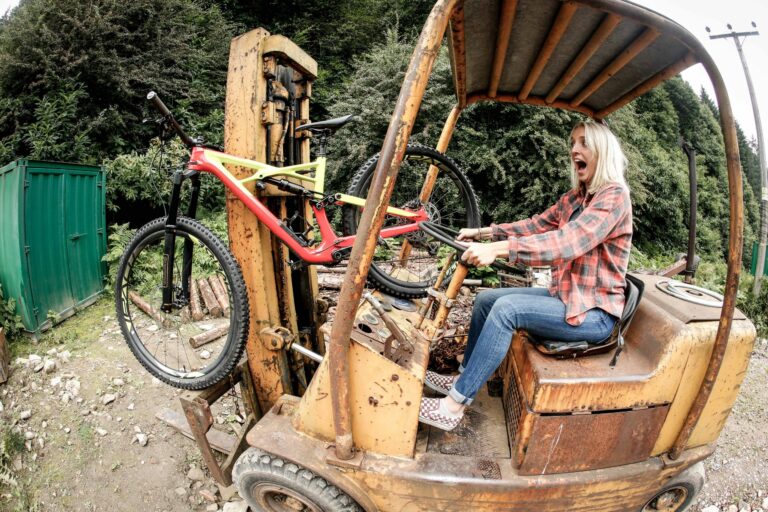
With a motorsport background and a fighter pilot dad, Luis Arraiz decided to target his technology on downhill at k-9 industries…
Taken from Dirt Issue 83, May 2007
Luis Arriaz was born in Venezuela in 1977, the youngest of three brothers; his father was a General and jet fighter pilot in the Venezuelan Air Force, so too his grandfather. In fact everyone in his family was either a military pilot or commercial pilot. It goes without saying that he’s been around some very interesting vehicles.
Arriaz has always lived a very active life, he flew hand gliders in his teens, did water skiing and scuba dived. These sports for him were very normal. Luis raced BMX with his mates at a local track until his bike got stolen, that was the end of his BMX career, but his next door neighbour continued racing and became a top five rider in Latin America.
In 1990 he moved to the USA because his father had been appointed as a military advisor to the United Nations. For two years they lived in a little town in Connecticut called Greenwich. From there he moved to Miami where he lived till he finished high school, before moving St. Louis Missouri to study mechanical engineering.
After two years in St Louis he was reading a British magazine in Borders – “Race Car Engineering” and saw a little ad from Oxford Brookes University that talked about their automotive engineering degrees and their links to motorsports. He gave them a call, ditched a spring break that he had planned to go skiing and came to England to check out the university. He transferred to Brookes in 1998 and got an undergraduate and masters in automotive engineering in 2005, in the field of motorsports.
Luis formed K–9 Industries Ltd in 2004 with his wife Alexandra and has been living permanently in Oxford since then. They are expecting the arrival of their first baby very soon.
Dirt: OK so your background, education, is in automotive engineering, give me one or two examples of the crossover in theory and technologies between bikes and cars.Luis Arriaz: For starters both cars and bikes are vehicles, they both use pneumatic tyres to transfer power to the ground through the contact patch, they are both affected by the same laws of physics and can be analysed using vehicle dynamics. On a car or race car, one assumes that the centre of gravity is fixed but on a bike, especially a downhill bike, this is not the case as the rider tends to move around the bike and vice versa, so it is not as easy to create an accurate model of what is actually happening. Also the fact that the contact patch is not 100 % in contact with the ground further makes things more difficult to predict and model.
You talked last week about Formula 1 drivers Button and Alonso. Button had to have a car set up correctly, Alonso could drive around a problem in a set up that may not be ideal.
Vehicle set up is probably one of the most important parts of motorsports, because you need to find a best compromise in suspension geometry, aerodynamic tuning, engine map and tyres to get the best performance from the driver and race for that particular track and day. The race engineer must work together with the driver to get best set up if there is one.
Well we are talking about some very talented drivers, but in a way it is unfair to compare two drivers driving different cars, but nevertheless. Button is an extremely smooth driver, he has one of the best techniques on the paddock, he’s power delivery is very soft and so is his cornering input, he is very easy on the tyres which is ideal, but he needs a car set up that flatters his style to extract the most from it, an ideal set up, but you can’t always have an ideal set up.
Drivers like Alonso and Michael are rare, they can adapt their driving technique and style to suit the set up of the car, they can learn how the car behaves and make changes to suit.
You have to remember that at the beginning of a race you may find yourself in a car that under-steers, but due to tyre degradation, changes in temperature, changes in the track surface, weather conditions and/or other factors, the car will exhibit over-steer rather than under-steer.
This is similar to what happens in downhill racing, the track continuously changes and you have to adapt and explore different line choices as the old ones get slower with more braking bumps. The riders need to adapt to these changes.
Click through to view the full gallery of Luis Arriaz before reading on…
Yes, I think this can be applied to a lot of downhill racers. Some can adapt and succeed others struggle to get the best out of a bike. Why bicycles Luis, downhill ones?
Luis Arriaz: I love bikes, I love downhilling, it’s a lot of fun. I think downhill bikes are at the forefront of technology for mountain bike design; they would be the equivalent to rally cars or perhaps single seater racing. In order to extract the most from the bikes riders are usually within the edge of control and I think it is the best category to test my suspension design because if it works for downhill it can easily adapted to other segments and applications of the sports, you cannot get away with using massive stiff springs to improve the pedal efficiency because it would have an adverse effect on the suspension performance.
Do you think anything can be learned from some of the automotive equipment e.g. dyno testing, on some of the current mountainbike suspension products?
Luis Arriaz: There is so much you can learn about dampers and telescopic forks and what is possible to achieve on your bike by using damper dynos. There is a lot misconception about how shocks and forks react to their adjustments and if people actually knew what each dial did and by how much it would be so more useful for them to set up their bikes and to ride them. You can see how dampers are affected by heat, repeated cycles, how much compression and rebound is available in both high and low speeds, how the shocks react to different frequency impacts, etc…
We have extensively dyno tested several dampers from Fox, Marzocchi and Cane Creek and the results obtained were unbelievable. We are also planning to do the same with shocks from other brands as well as an extensive testing of forks. Fork testing is an area that we want to explore a lot more.
The results obtained from dyno testing can be verified with actual field testing to ensure that the best units or the best settings are selected for the intended application.
What shock would you chose on your bikes?Luis Arriaz: The Double Barrel from cane Creek is an amazing shock, we have performed extensive damper dyno testing at Oxford Brookes University and this is the best damper by far. It has outperformed the others; the Marzocchi Rocco is also a very good shock but you can do so much more with the Double Barrel that would not be possible with any other damper.
So K–9 is definitely looking to sell bikes with the Cane Creek as standard but will give the riders the options to specify a different and less costly damper if they choose too.





